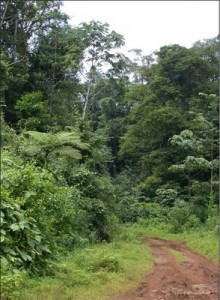Smithsonian Tropical Research Institute
 Satellite data and other research reveal that huge tracts of abandoned tropical forests that were once logged or farmed are regrowing, prompting a contentious debate among world scientists convening at the Smithsonian’s National Museum of Natural History Jan. 12.
Satellite data and other research reveal that huge tracts of abandoned tropical forests that were once logged or farmed are regrowing, prompting a contentious debate among world scientists convening at the Smithsonian’s National Museum of Natural History Jan. 12.Some researchers contend that this process has been inadequately factored into estimates of future species loss and that the biodiversity crisis has been overstated ( the prevailing scientific prediction is that up to half of all species may be lost in our lifetimes ).
Others contend that only 50 to 80 percent of plant species may return to logged or altered forests, and many animal species will not survive the transition.
Still others warn that the continuing rapid expansion of logging and mining roads makes forest access easier for commercial poachers and the hungry, with animals being hunted for exotic food, trophies, medicine and pets on levels that threaten the continued existence of many species.
They state that this increasingly massive harvest of animals, combined with the emergence of devastating wildlife diseases, habitat loss due to industrial scale development, climate change and other factors, is a recipe for catastrophic biodiversity collapse, despite encouraging evidence of rainforest regrowth in many places.
The need to shed light on these issues has prompted the Smithsonian to invite leading experts to present their ideas at a major symposium on the tropical extinction crisis, featuring eight researchers whose symposium papers will be published in a special volume of the U.S. journal Conservation Biology.
Full text: http://media-newswire.com/release_1083946.html
Coverage summary: http://spreadsheets.google.com/ccc?key=pRwdzmg01IrRN-FMpvxkScg